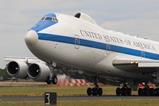The US Navy and uncrewed aircraft manufacturer General Atomics Aeronautical Systems have tested the deployment of submarine-detecting buoys from the latest MQ-9B SeaGuardian remotely piloted aircraft (RPA).
General Atomics revealed the tests on 20 March, saying the event involved an MQ-9B equipped with the company’s proprietary Sonobuoy Dispensing System (SDS) and a Raytheon SeaVue multi-mode radar.
The evaluations took place on 27 February off the coast of Southern California.
As part of the assessment, the SeaGuardian dropped eight AN/SSQ-53 and two AN/SSQ-62 sonobuoys, which were monitored by a General Atomics-made control system onboard the aircraft.
“This was a very successful demonstration of our SDS capability,” says General Atomics Aeronautical Systems president David Alexander. “The demonstration helped us prove out the SDS, which is an important component for our anti-submarine warfare capability.”
Naval Air Systems Command, which is the airworthiness authority for US Navy (USN) and US Marine Corps aircraft, provided interim flight clearance to the MQ-9B for the demonstration flight.

The SeaGuardian is a medium-altitude, long-endurance RPA system developed as a successor to the widely-used MQ-9A Reaper combat UAV.
Unlike its predecessor, the MQ-9B is available in civil airspace configuration, meaning it can be used by non-military entities such as law enforcement and search and rescue.
The type is currently being operated by the Japan coast guard and the Japan Maritime Self-Defense Force, while the UK Royal Air Force is fielding 16 of the non-maritime SkyGuardian MQ-9B variant as the Protector RG1.
India and Canada are both pursuing a SkyGuardian acquisition, with 31 and 11 aircraft respectively.
The US Air Force (USAF) Special Operations Command became the first US SkyGuardian customer in March 2023, with an order for three MQ-9Bs for use as test platforms.
Sonobuoy tests with General Atomics indicate the USN may be considering a similar acquisition.
The service’s main platform for maritime patrol is the crewed Boeing P-8 Poseidon, based on the 737-800 passenger jet.
However, the USN does supplement its maritime reconnaissance and submarine hunting force with the Northrop Grumman MQ-4C Triton unmanned air vehicle.
The latest test follows a 2021 demonstration of an earlier sonobuoy system, deployed onboard an MQ-9A. General Atomics at the time described that as the world’s first self-contained anti-submarine warfare capability for an uncrewed aircraft.
























